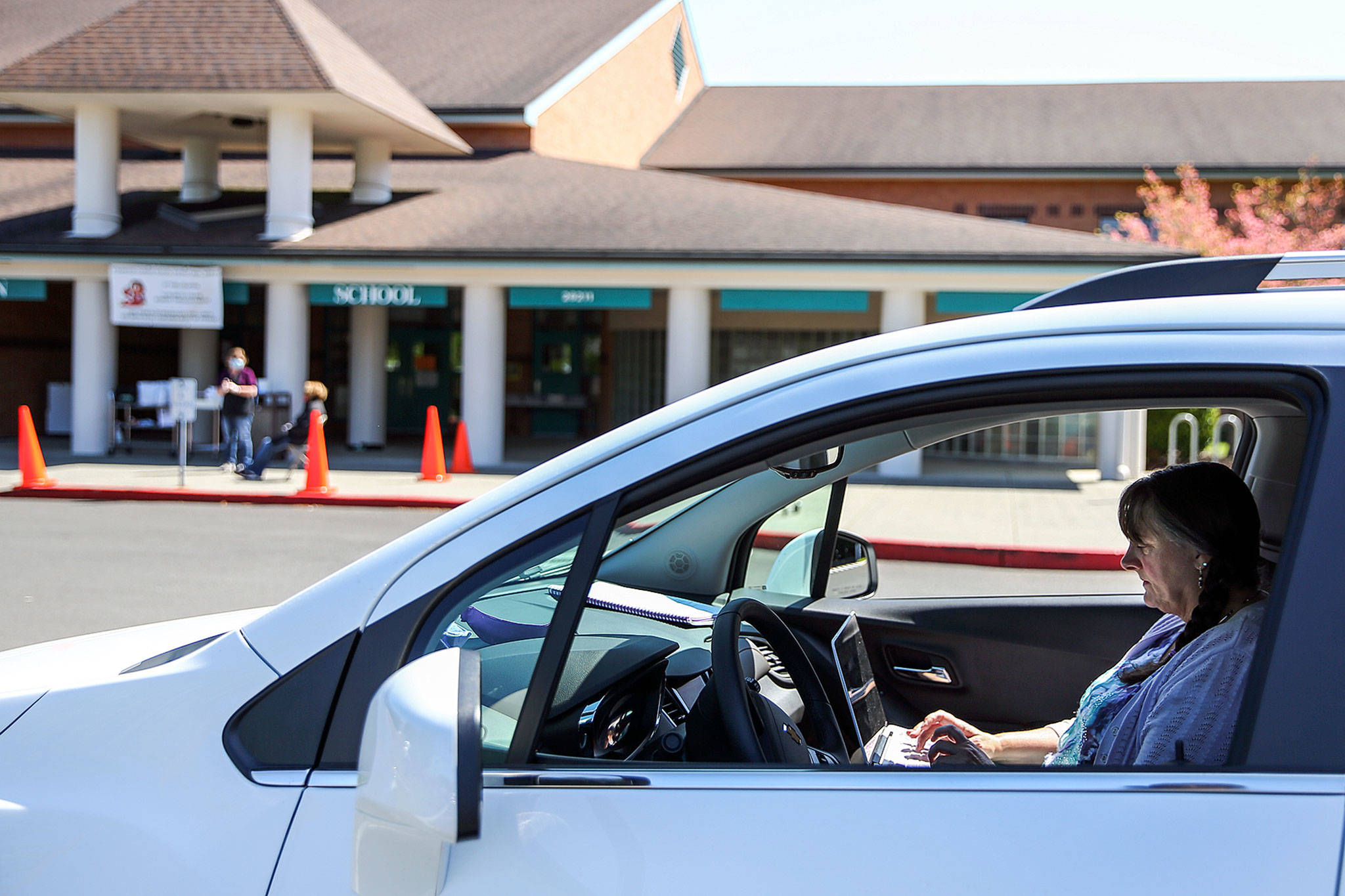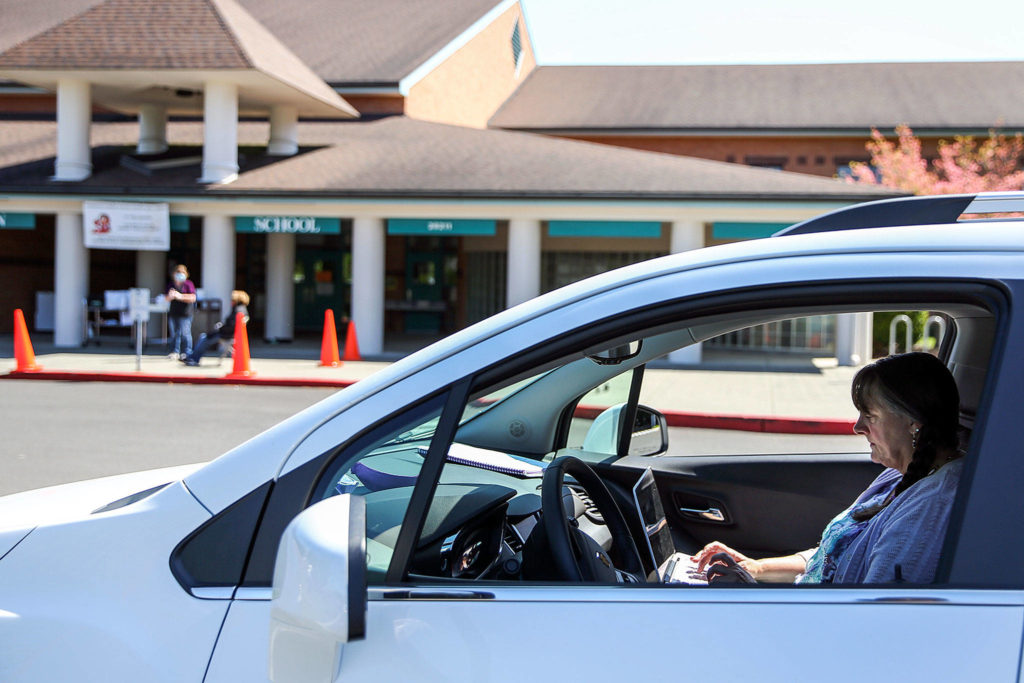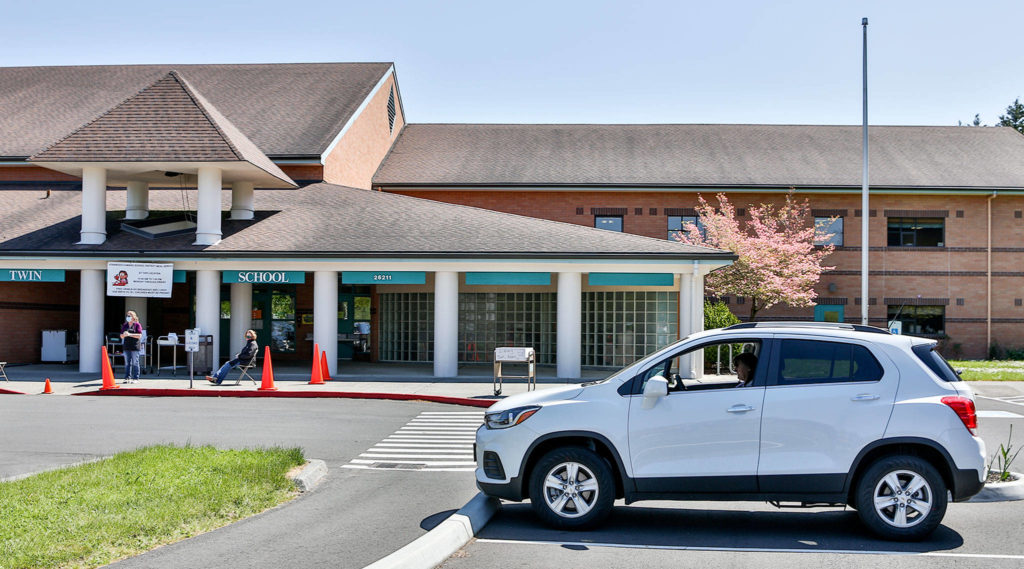SULTAN — Jessica Pfalzgraf showed up to her fourth-grade class session in a rowboat, oar in hand.
Her students joined her through Zoom in “boats” of their own — paddling up the Mississippi River in bathtubs, beds and homemade box canoes.
Since Gov. Jay Inslee ordered Washington schools to go digital mid-March, the Sultan Elementary teacher has made an extra effort to keep her kids interested.
“I am very passionate about making learning fun and engaging,” she said. “I did not think that this should stop just because the nature of school looks different.”
During her nautical Lewis and Clark lesson in late April, Pfalzgraf’s virtual classroom was full.
Getting full participation wasn’t easy.
Many of Pfalzgraf’s students didn’t have computers or reliable internet when schools first shut down. She spent hours working with families and the district to ensure they could access Zoom sessions.
In Snohomish County’s rural school districts, administrators are still working to get some students online.
Most districts have ordered hundreds of individual hot spot devices to pass out to families without internet access.
The problem is, school districts all over the United States had the same idea. Most of the portable internet connections are back ordered for weeks.
In Sultan, technology director Dave Moon said the district opened up a help line dedicated just to getting students connected. The line is managed by six people, and they’re busy all day long.
Some Sultan neighborhoods have spotty Wi-Fi that constantly kicks kids out of their Zoom calls, Superintendent Dan Chaplik said.
“There are other places that are just really rural, and the good deluxe service just hasn’t reached them yet,” he said. “It’s challenged an overall infrastructure that did not prepare for anything like this.”
The district ordered 100 mobile Wi-Fi hot spots in anticipation of schools shutting down. They’ve handed all those out, and have 100 more on order. The devices are $10 each, with a $120 annual subscription fee.
The 100 additional hot spots haven’t arrived yet, but Moon said there’s already a waiting list of families who asked for them.
“The larger school districts made such large purchases they wiped out the inventory,” Chaplik said.
The Arlington School District waited weeks for 300 back-ordered hot spots, spokesperson Gary Sabol said. Most of the Verizon devices just arrived this week, but they’re still waiting on about 80 more.
Each of their hot spots cost $29 to purchase and $40 per month to rent.
Teachers are also offering paper homework packets, which they’ll continue even after all the hot spots arrive.
When schools shut down, Sabol said the district received 350 requests from Arlington families for hot spots.
“In Arlington, we have a lot of outlying rural areas like Oso and Silvana and it’s hard to get internet access out there,” Sabol said.
But some of those remote areas also lack cell reception — which means a hot spot won’t work. Those households will have to make due with paper packets, Sabol said.
In Granite Falls, over 100 families said they didn’t have the internet connection necessary for remote learning. Administrative assistant Melanie Freeman said the district expects that number to rise as more families have issues connecting.
In some cases, a household has internet access but the connection can’t support parents and multiple kids being online at once, Freeman said.
The district received a grant for 100 hot spots from T-Mobile, which already arrived.
Even with the devices, Freeman said teachers have seen an increase in students requesting paper packets.
“They want a paper packet in hand,” Freeman said. “That kind of surprised us.”
Granite Falls and most other districts have also taken the passwords off Wi-Fi networks in school buildings to allow students to park and upload assignments or attend a meeting.
The Washington State Department of Commerce also launched drive-in Wi-Fi hot spots this week. There’s one at Washington State University’s Everett campus at 915 N. Broadway and another in progress at McCollum Park, 600 128th St. SE, Everett.
As of last week, the Stanwood School District was still working to get about 200 families online.
The south end of Camano Island is a dark spot for internet access, human resources executive director Maurene Stantonsaid.
The district considered parking buses equipped with a hot spot in neighborhoods needing internet access, but the devices didn’t have a long enough range. They opted for individual household hot spots instead, but Stanton said they’ve had a hard time finding any available.
“Given what we’re learning now, we might have to rethink (the buses),” she said.
For now, teachers are handing out paper packets and students can use Wi-Fi in district building parking lots to upload assignments.
The Monroe School District is testing out school bus-mounted Wi-Fi.
If the one device they ordered works well, communications manager Tamara Krache said they might order more and deploy them in off-the-grid neighborhoods.
It’s not just students struggling to get online.
JoDonna Olson, a second-grade teacher at Twin City Elementary, lives north of Arlington down a 10-mile dead end road.
“When all this started in March, I already knew my internet connection was not that good,” she said.
Neither she nor her daughter, who attends Twin City Elementary, can get their work done.
Zoom meetings are blurry and downloads fail.
So she’s been driving to the elementary school and tapping into the building’s Wi-Fi three times a week.
At first, she went into her office. But she’s found it easier to just stay in the car so she doesn’t have to put on a mask and wipe down everything she touches.
“To me, that is just too much,” she said. “I can just sit in the car and get the laptop out. If I need a snack, I can get a snack. I can get out and walk around the parking lot if I need a stretch.”
Olson said she’s adjusted to this new normal.
“As time goes by and all of us are learning little tricks, I think it’s getting a little better,” she said.
In Darrington, one of Snohomish County’s most remote districts is battling both a lack of internet access and spotty cell service.
Without cell service, hot spots won’t work.
“We just don’t have the cell coverage or amount of data to cover things,” Superintendent Buck Marsh said.
He estimates close to half the district doesn’t have internet access at home.
Teachers are relying on paper packets. The district also boosted school building Wi-Fi signals so they reach into the parking lots.
Students filter into the lots throughout the day, parking and uploading assignments from their cars, Marsh said. Some even break out a lawn chair and sit outside their cars for a while.
The Darrington School District also staggered online class times, moving the younger grades to later in the day so parents can help their kids after work.
“Its not an ideal situation,” Marsh said. “You just have to be resilient and do your best.”
Even when internet connection isn’t an issue, technology can throw up other barriers to remote learning.
Michael Donnelly’s 9-year-old grandson, who attends Highland Elementary School in Lake Stevens, is staying with him during quarantine. Donnelly lives in Long Beach, some 200 miles from his grandson’s school.
Donnelly bought an HP laptop to ensure the elementary schooler could attend his twice-weekly Zoom meetings, but still hasn’t been able to access the online classroom.
“I’m not very computer savvy,” Donnelly said in an email. “…Normal computer direction would be gobbledygook to me.”
Lake Stevens tech staff couldn’t get him connected, Zoom wouldn’t answer, and HP did not know how to help, he said.
But despite tech challenges, most Snohomish County students are still signing in to class.
Districts are tracking student engagement online in lieu of taking attendance the traditional way.
Student engagement averaged more than 90% across all grade levels in the Lake Stevens School District last week. Officials reported rates of 94% in elementary schools, 92% in middle schools and 95% at Cavelero Mid High and Lake Stevens High School.
In Arlington, for the week ending April 20, overall engagement was a notch under 90% in the district. Levels ranged from 84.5% at one high school to 96.6% at a middle school.
In Darrington, student engagement is averaging about 89% at the elementary level, 85% in middle school and 86% in high school, according to Superintendent Marsh.
Still, Long Beach grandfather Donnelly is not convinced.
“You can tell everyone that this school computer thing doesn’t work,” he said.
Julia-Grace Sanders: 425-339-3439; jgsanders@heraldnet.com.
Talk to us
> Give us your news tips.
> Send us a letter to the editor.
> More Herald contact information.





























